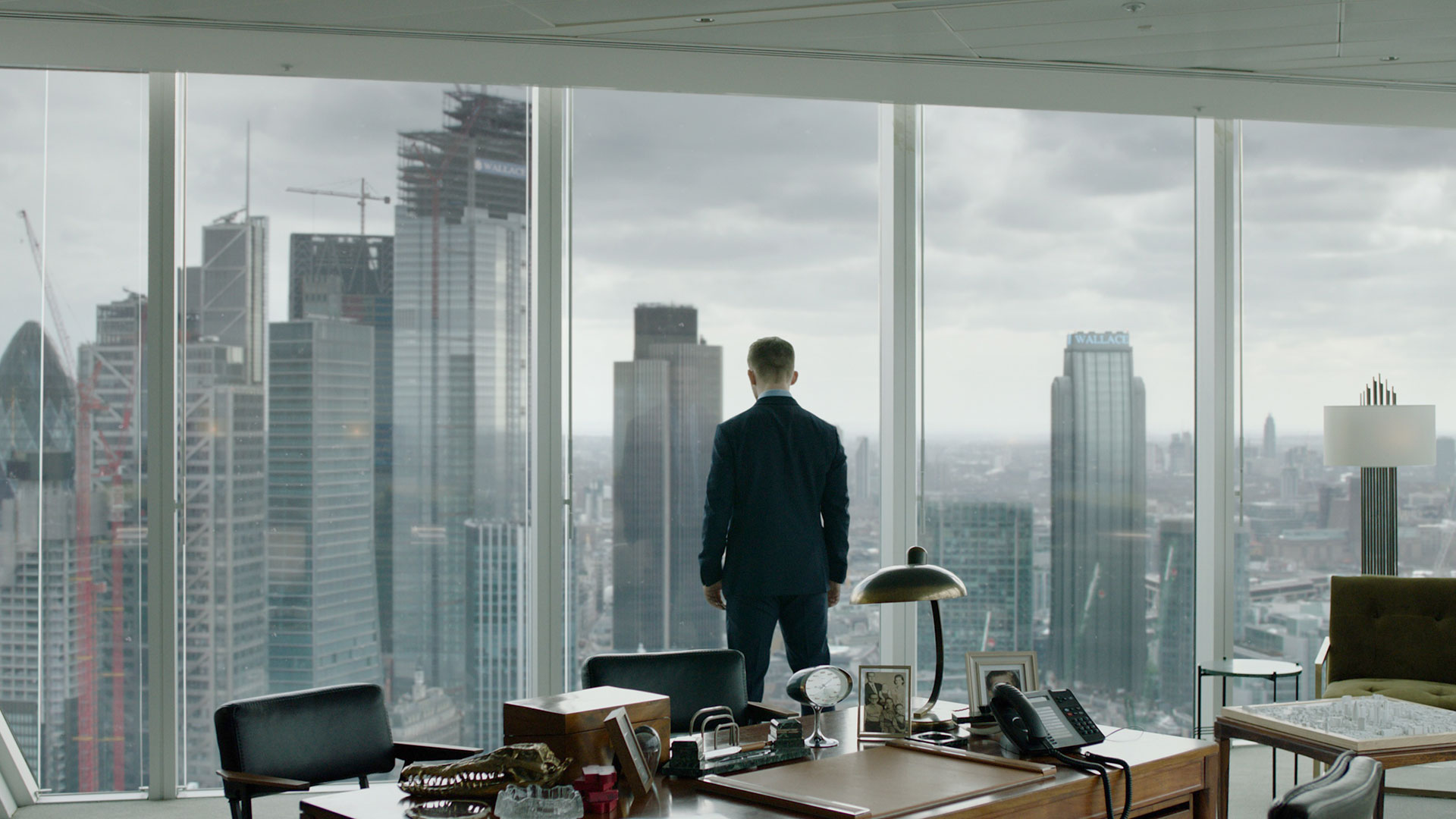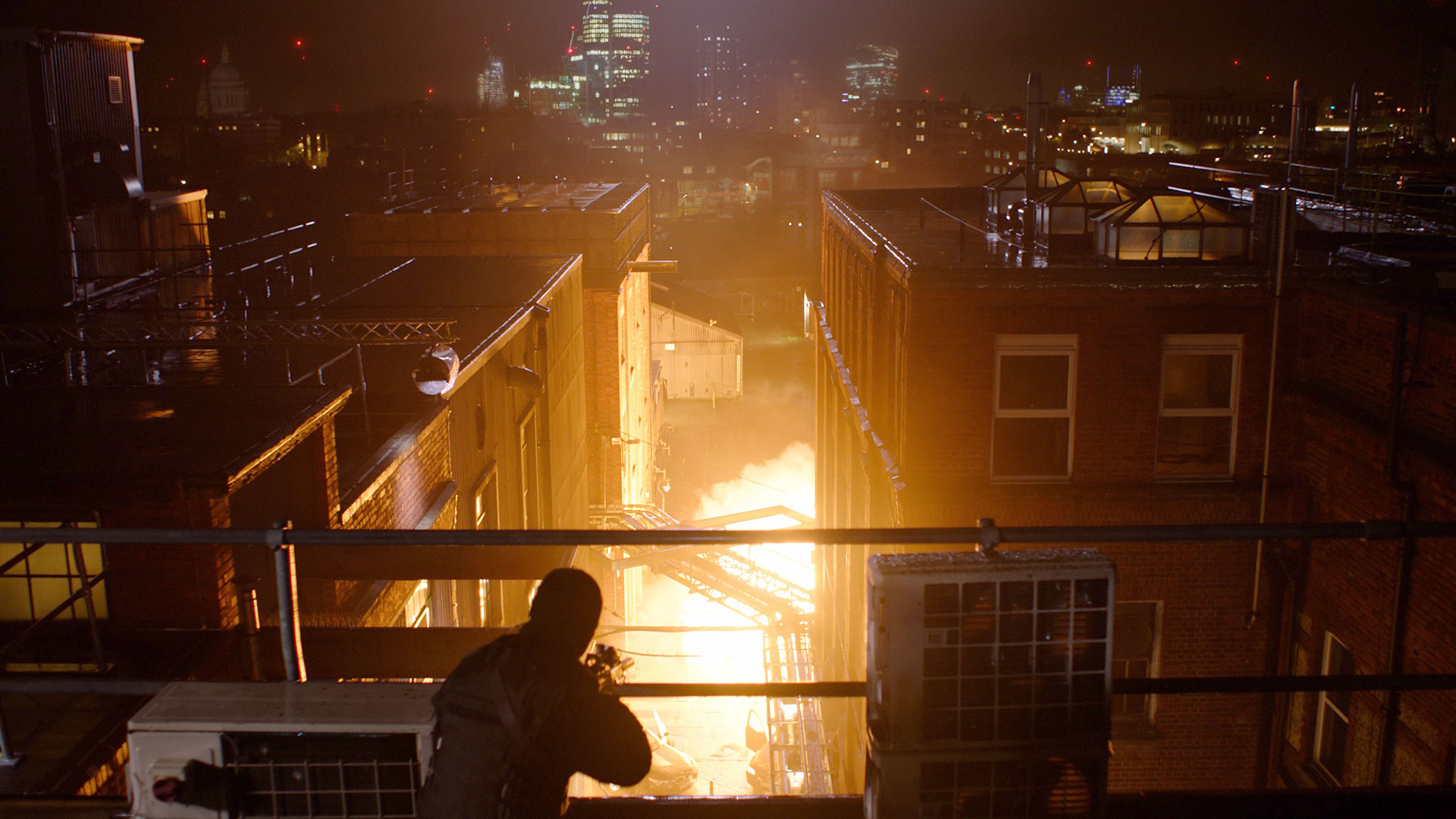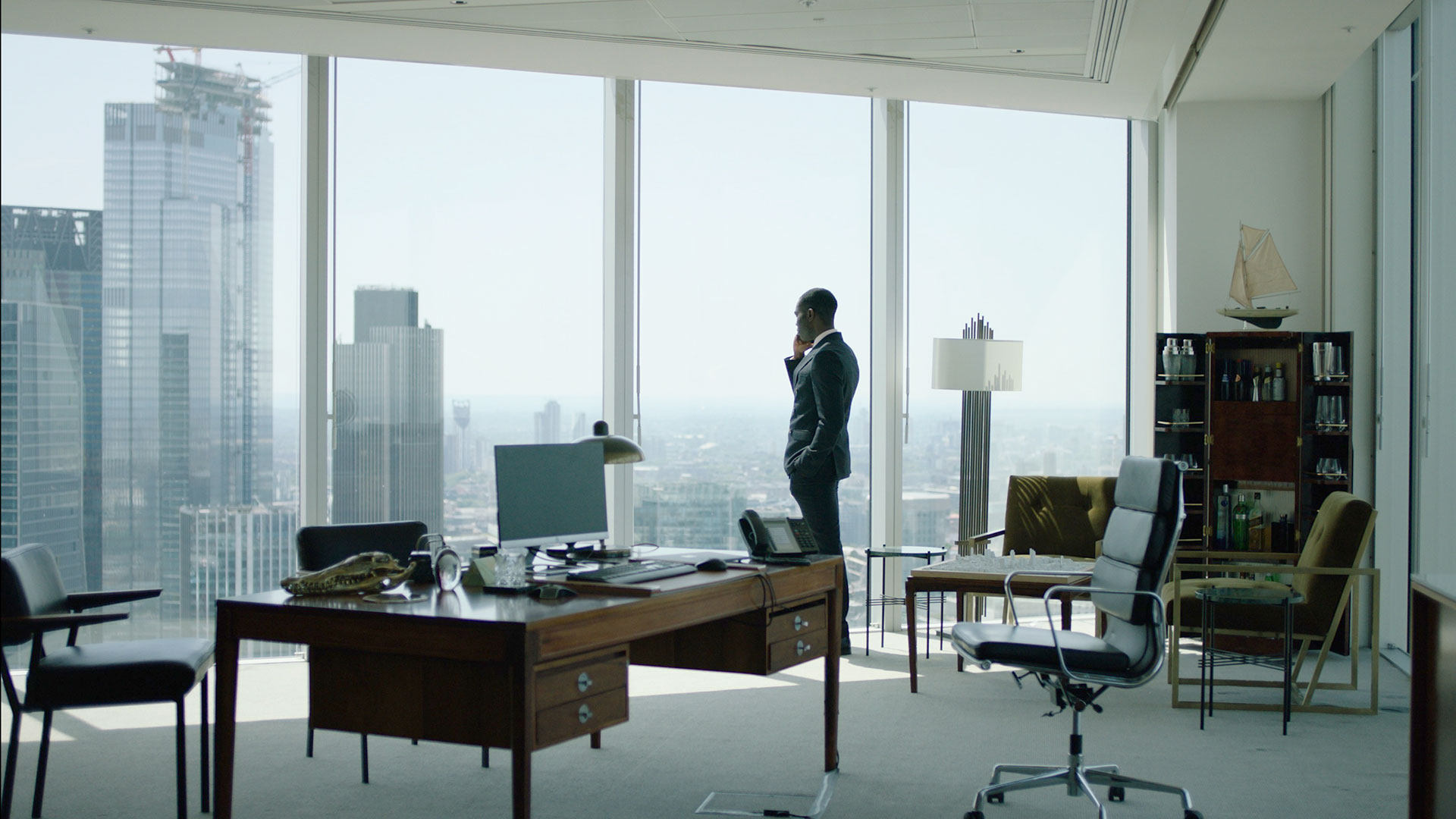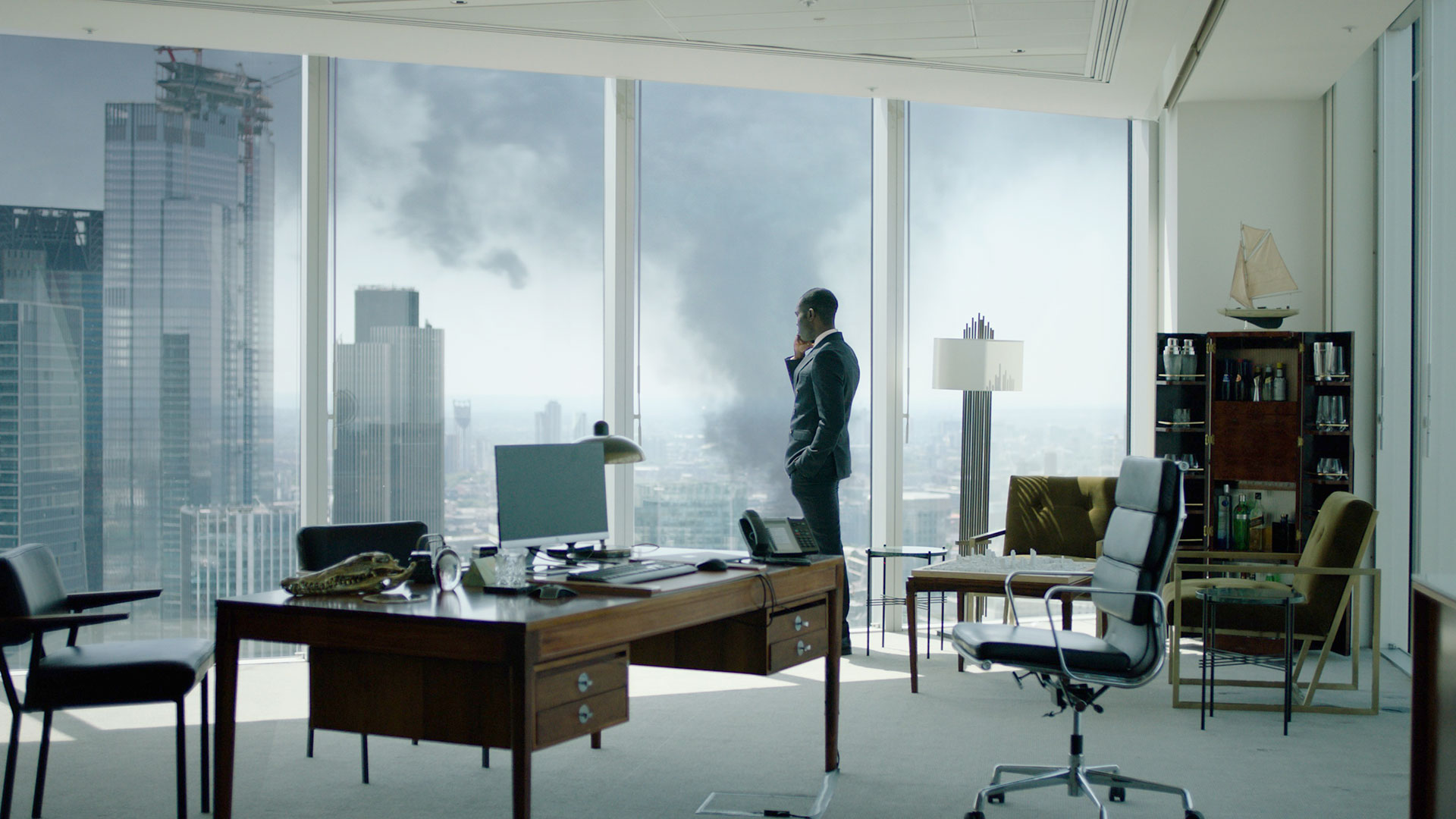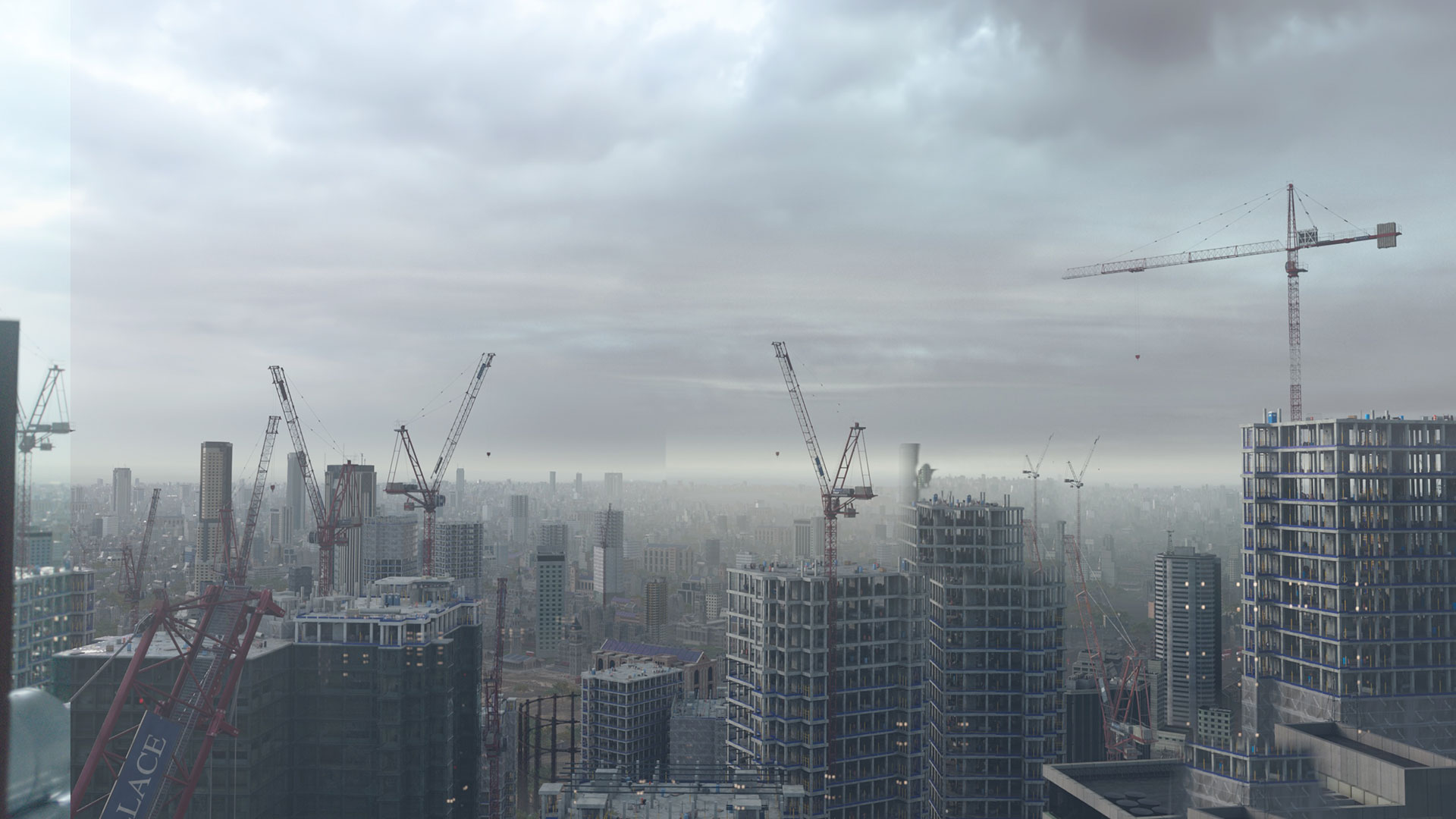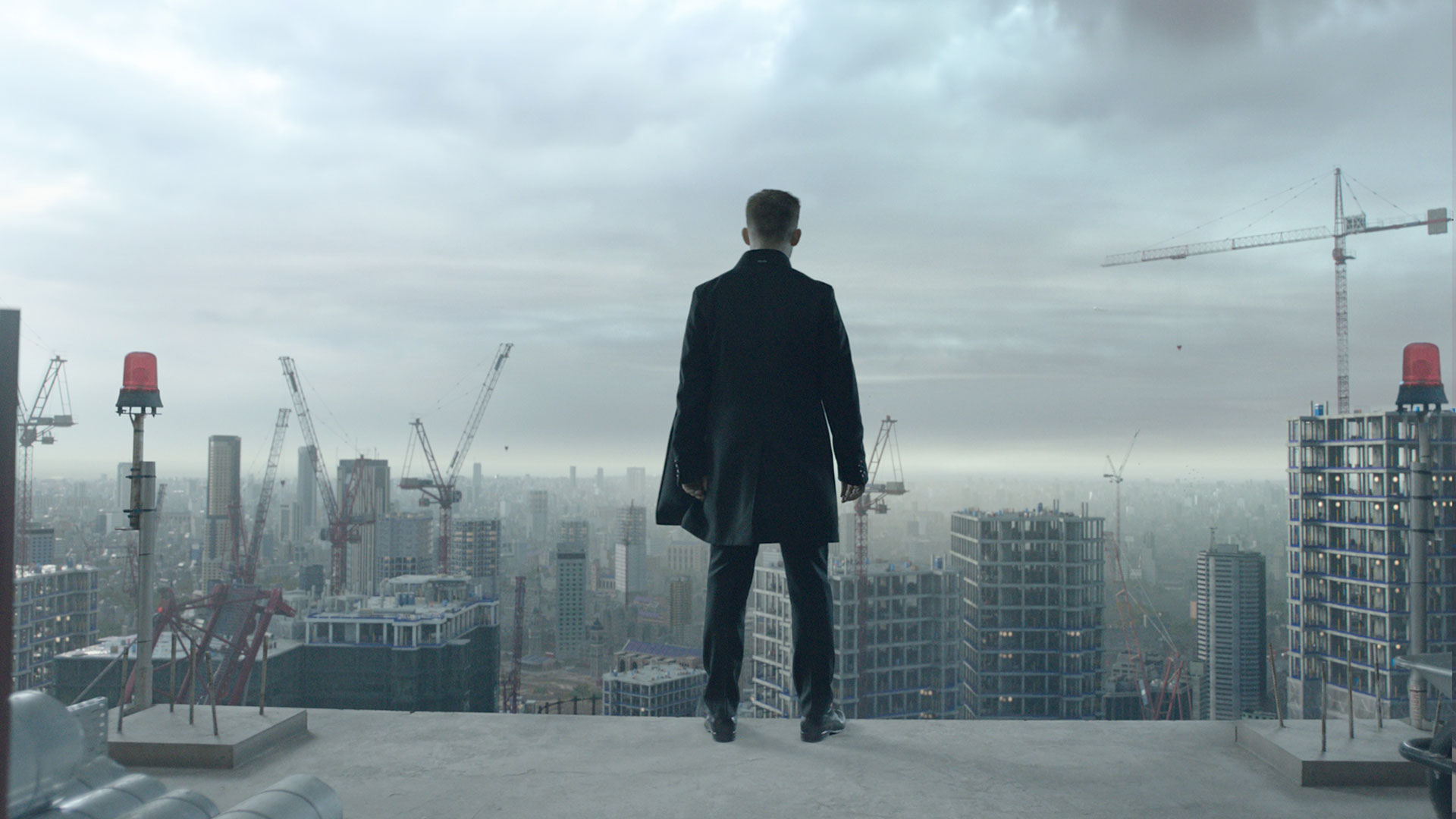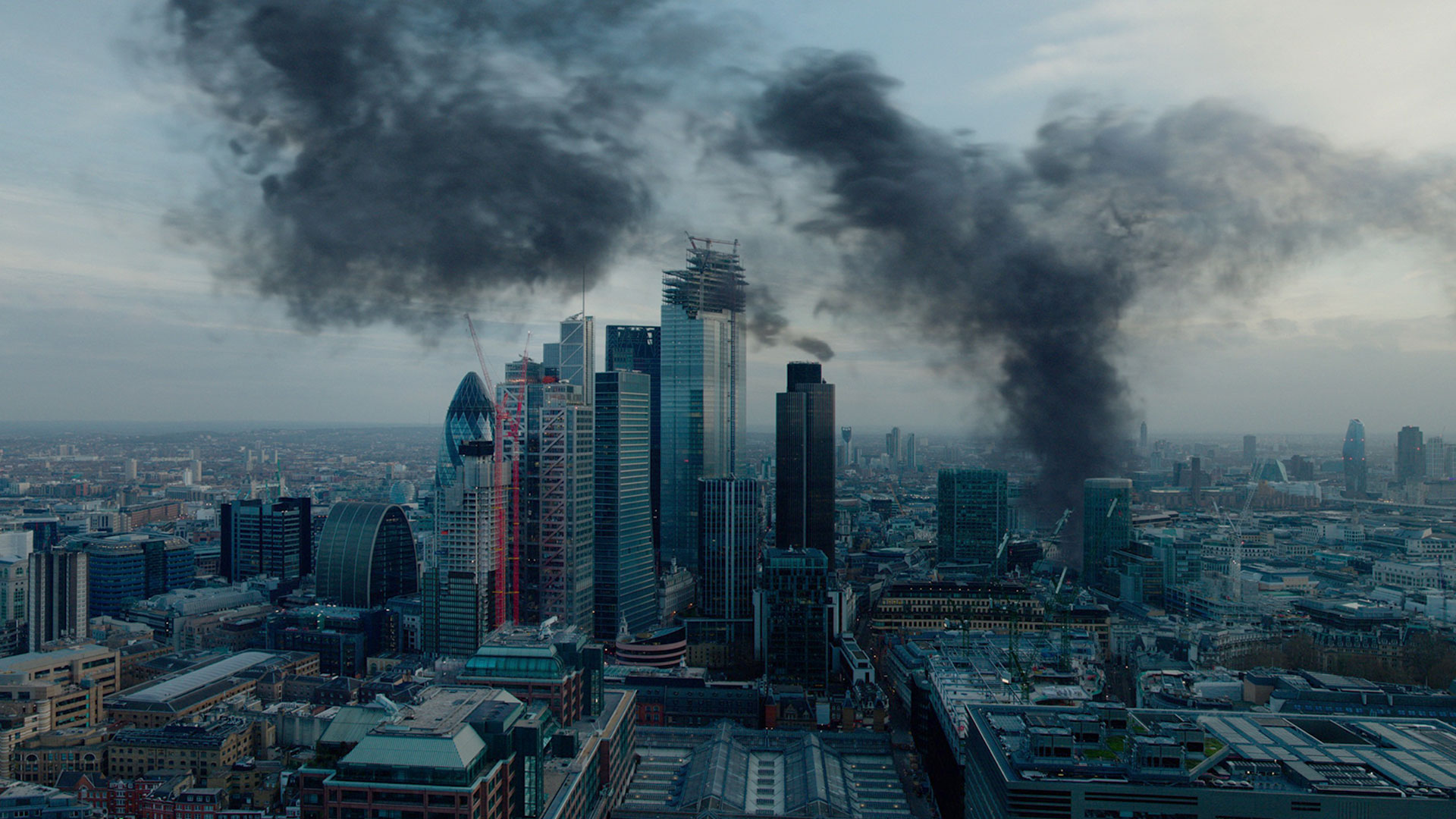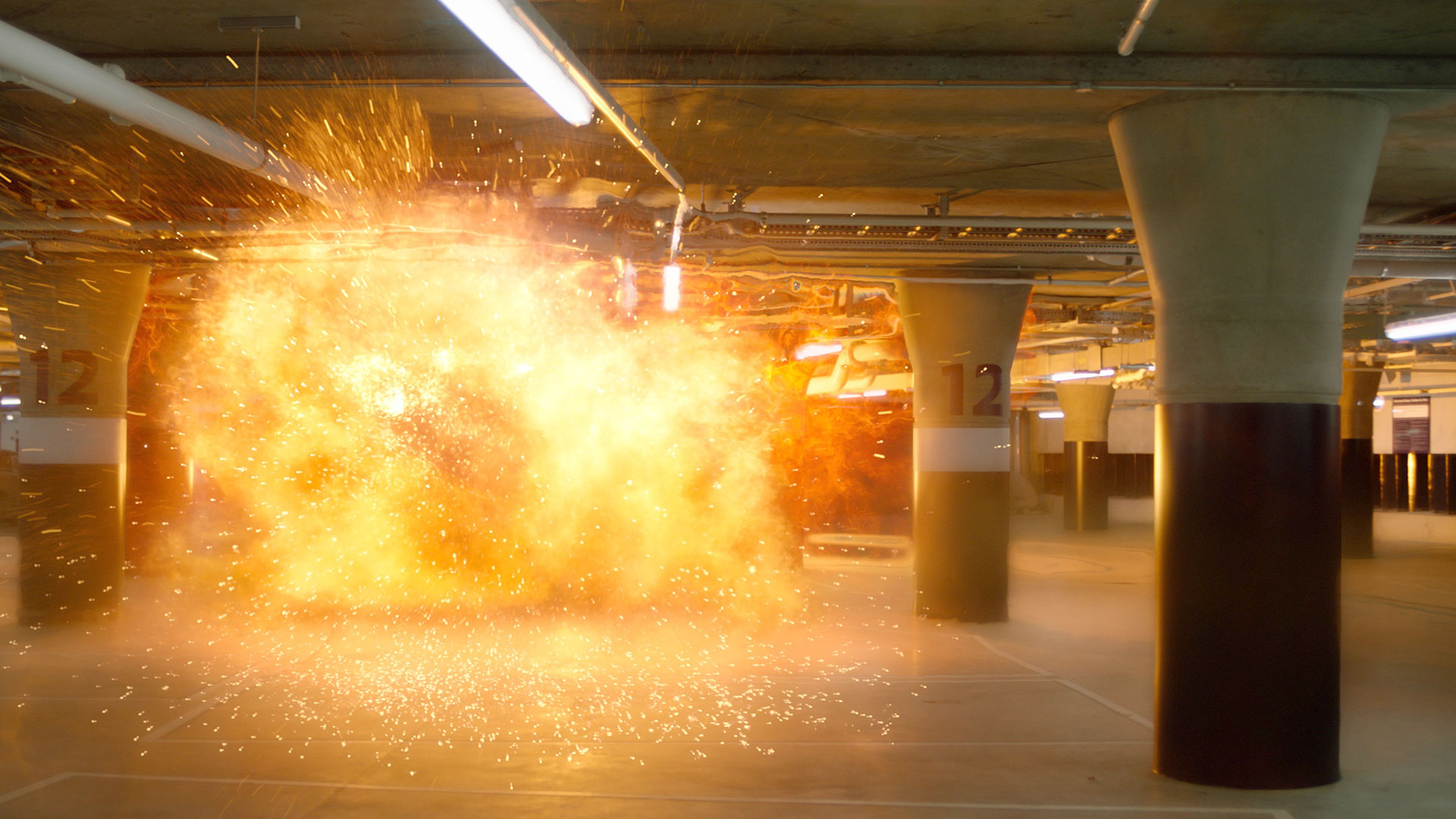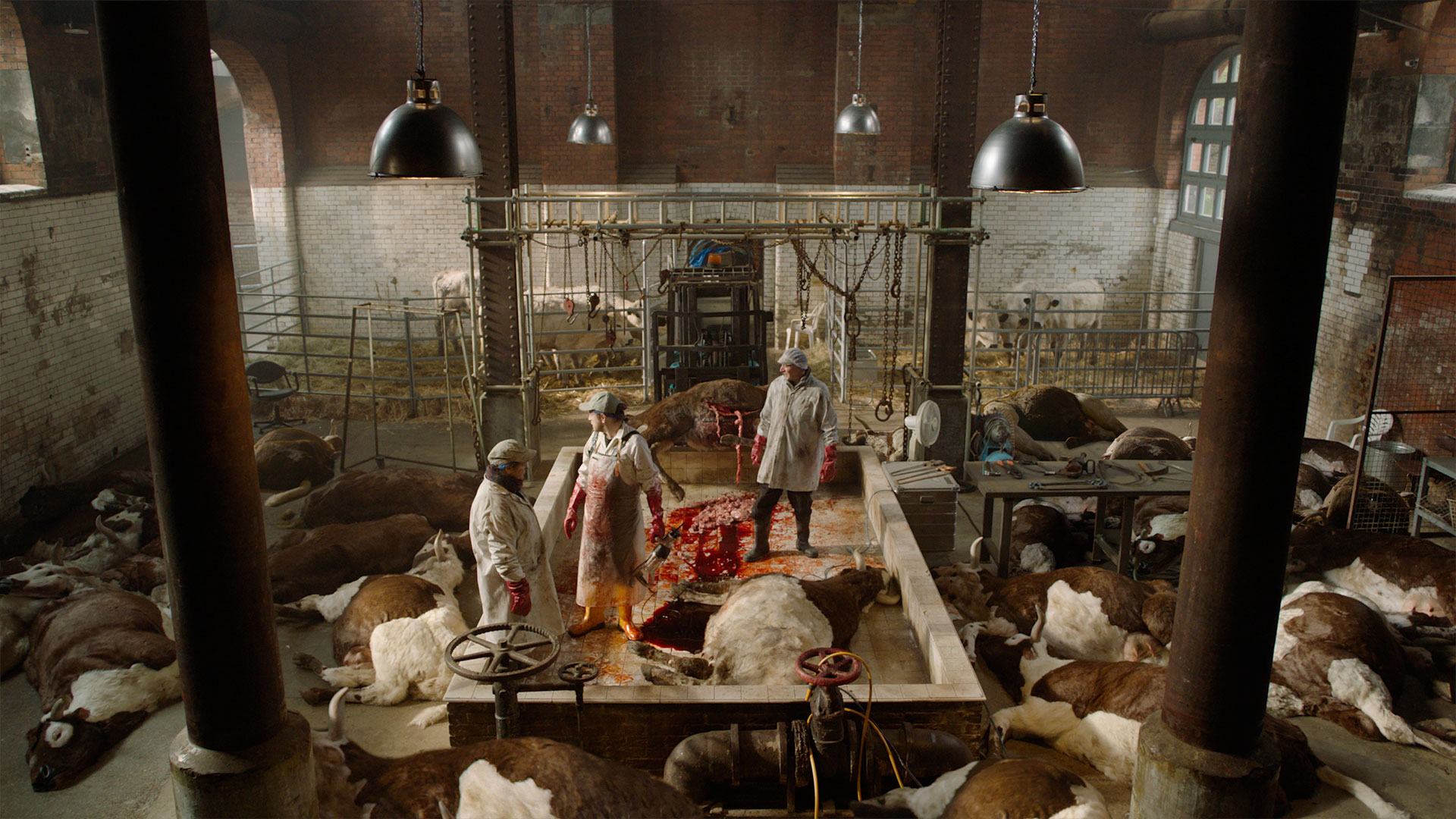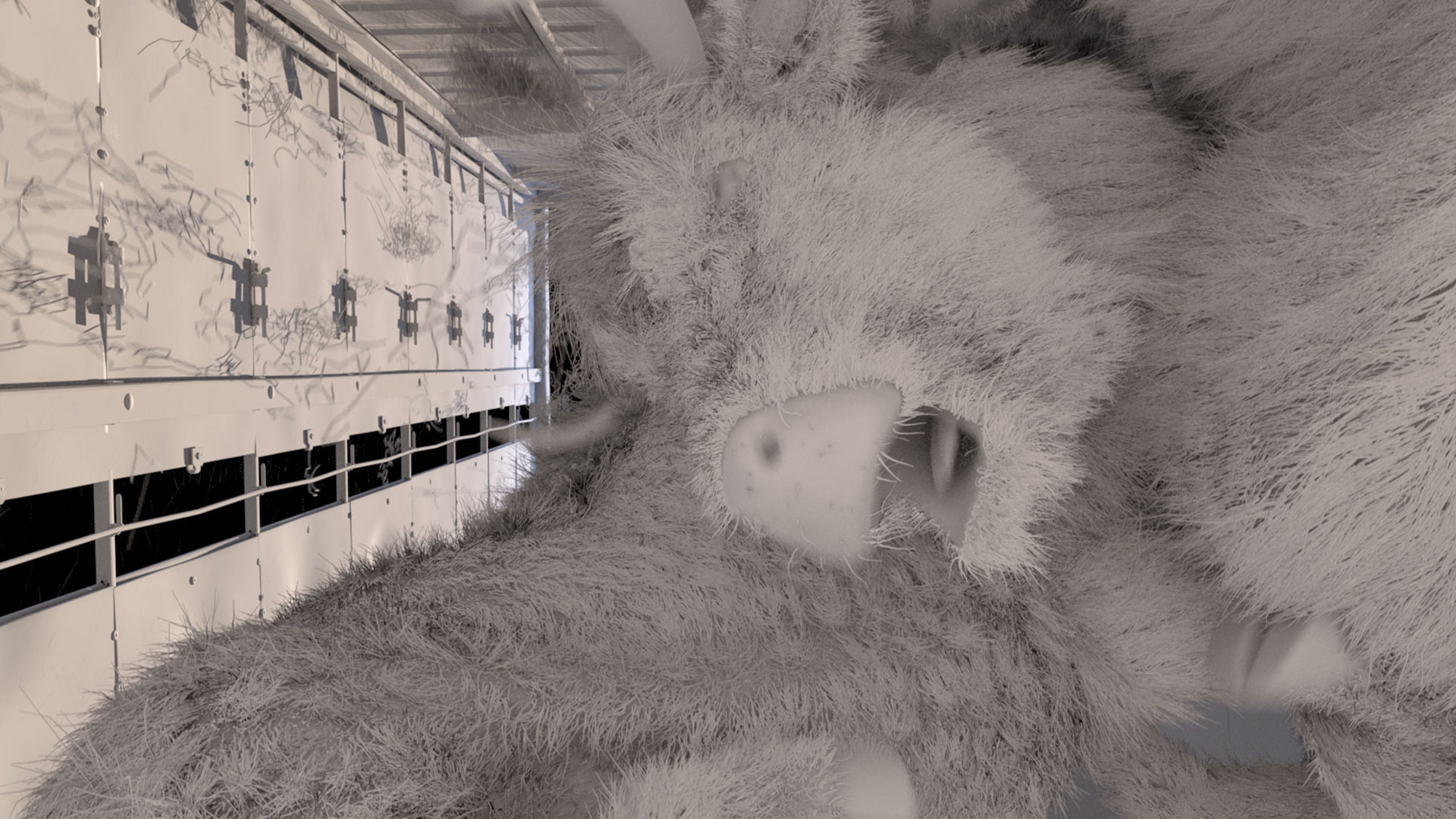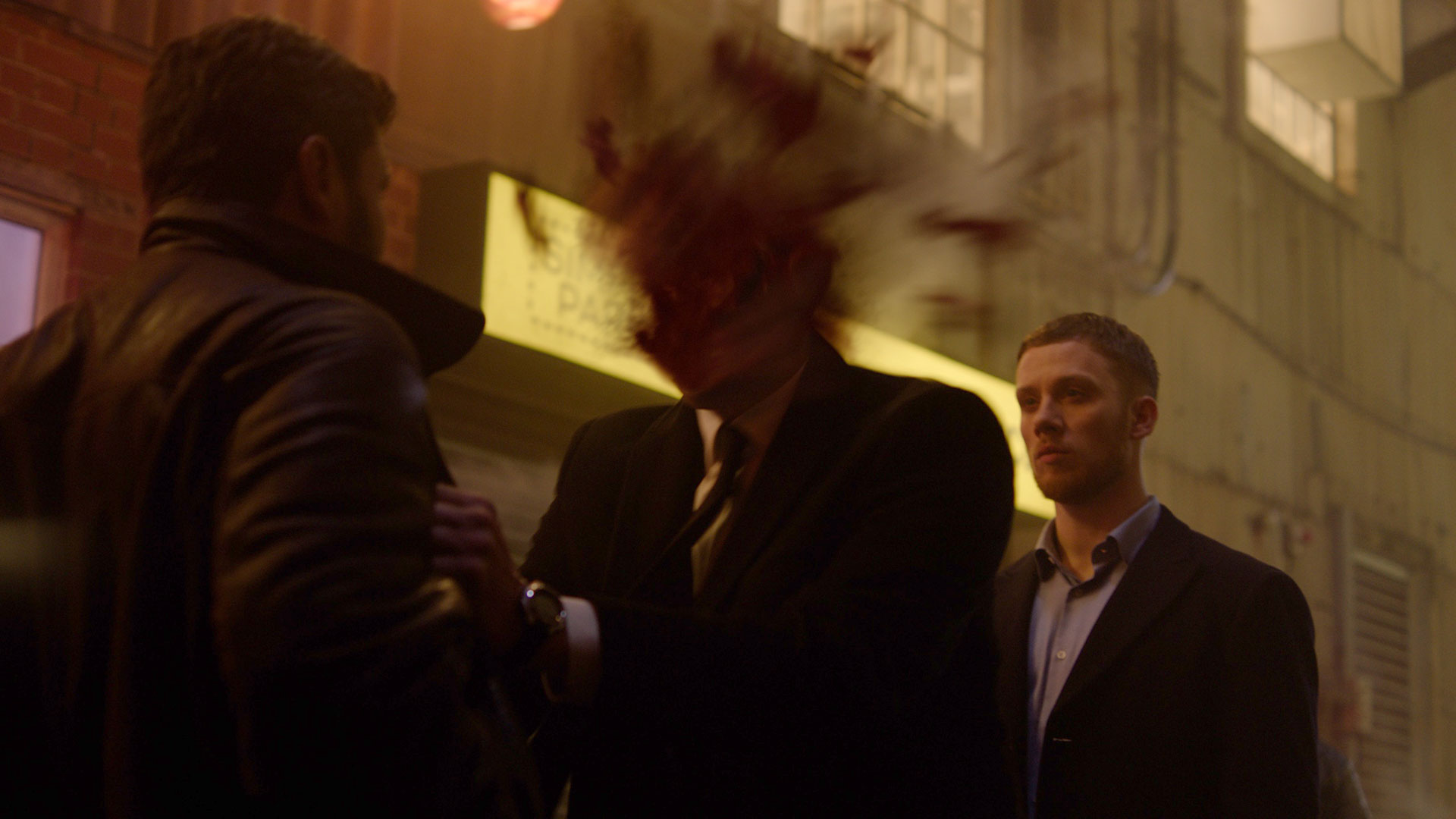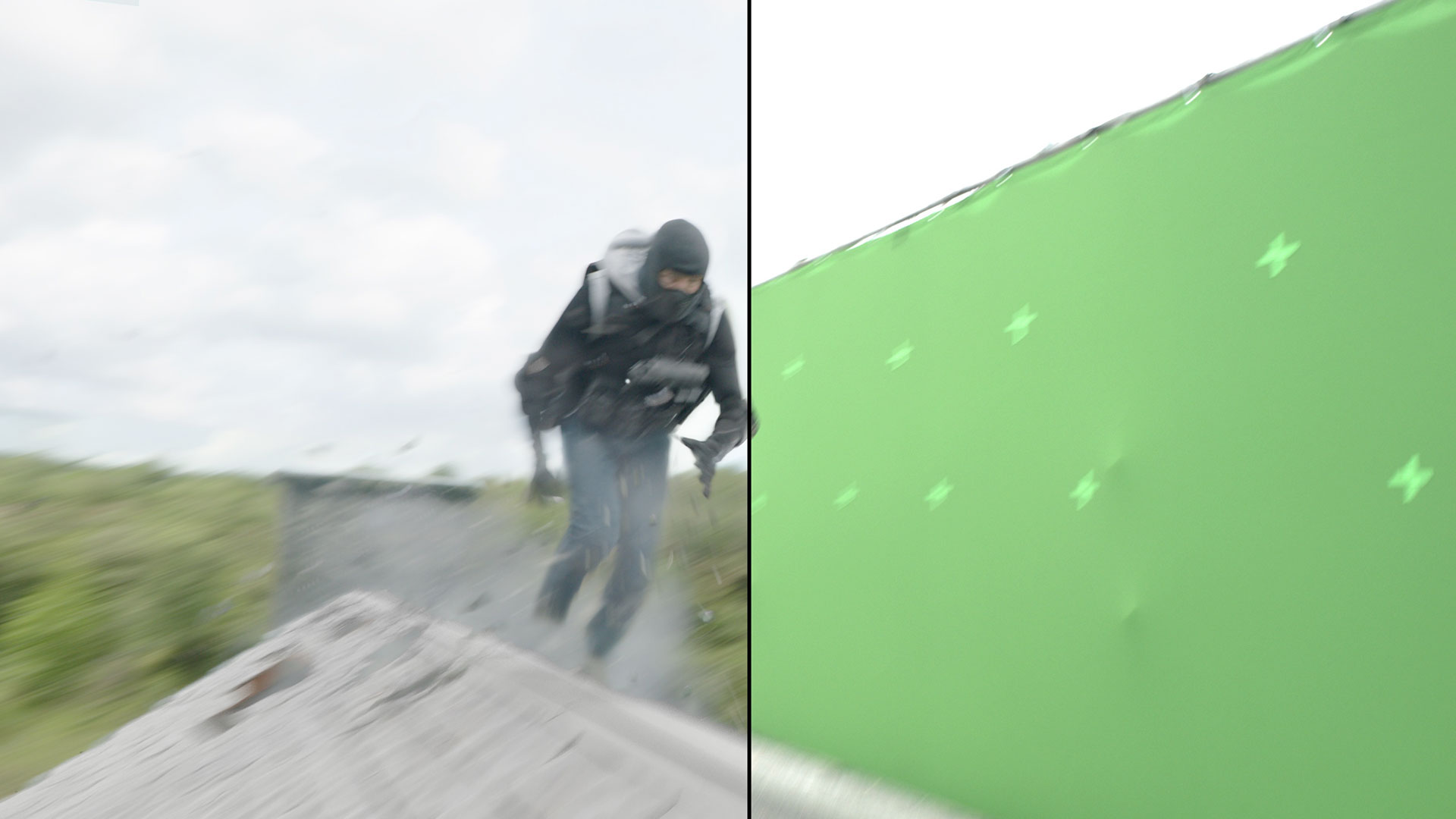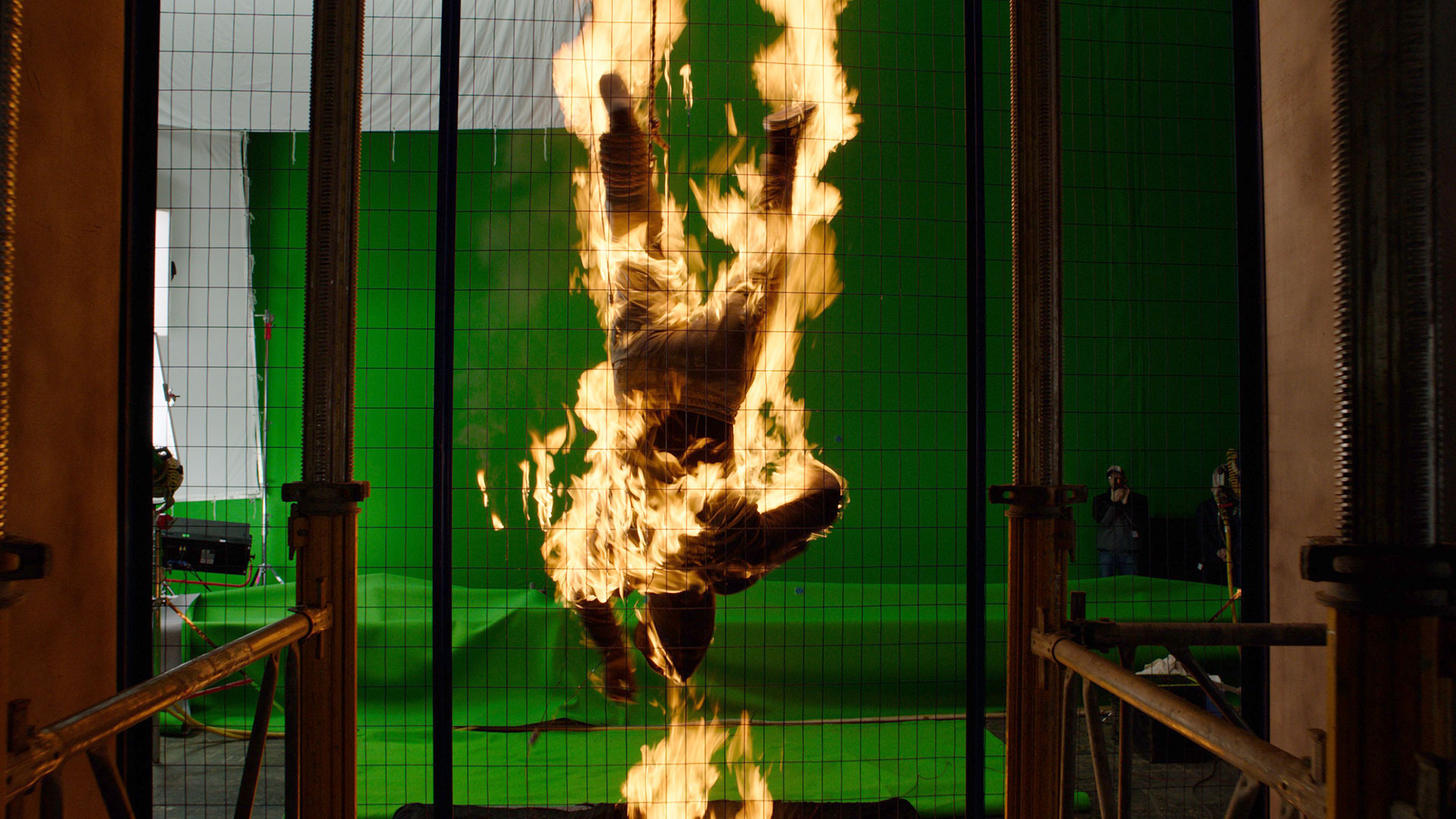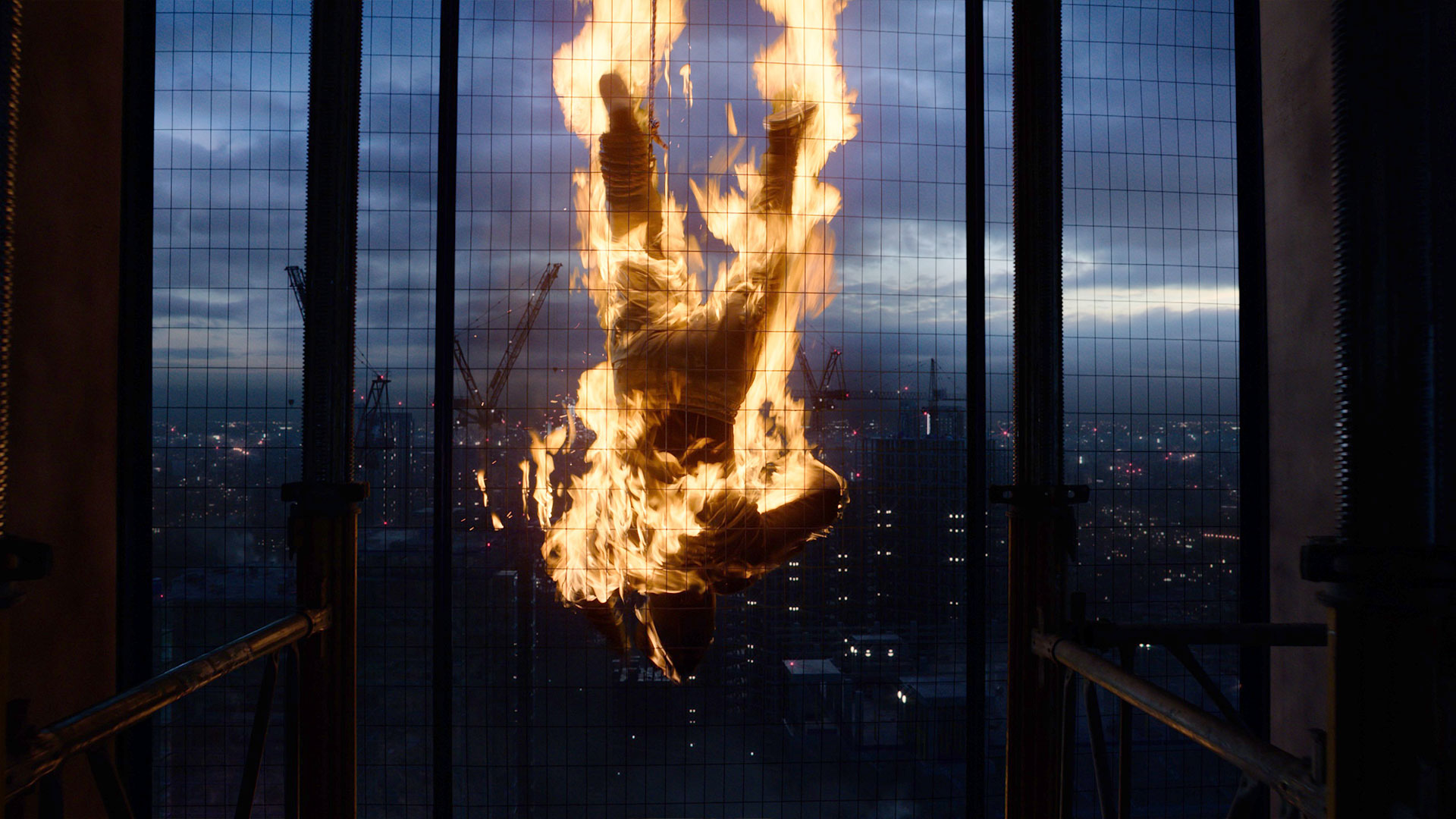Jonathan Harris began his career in visual effects in 2006. He works in many studios such as Important Looking Pirates, DNEG, Weta Digital and in 2018, he founded his studio, Dupe. He has worked on films such as KICK-ASS, IRON MAN 2, MAN OF STEEL and AVENGERS: THE AGE OF ULTRON.
In 2013, Paddy Eason explained the work of Nviz on GRABBERS. He then worked on many films such as ROBOT OVERLORDS, ABSOLUTELY ANYTHING, KINGSMAN: THE GOLDEN CIRCLE and JESUS SHOWS YOU THE WAY TO THE HIGHWAY.
What is your background?
I was a freelance compositor for 10 years before starting a company in 2016 that eventually became Dupe VFX. Previous to compositing I had a lot of on set experience working for my parents who are both in the industry working as a film producer and a SFX supervisor. That experience is invaluable to me now.
How did you and Dupe get involved on this show?
We did a great job on one shot for Gareth Evans for his previous film APOSTLE. It was a full CG train shot for the opening of the film. What we were able to do blew his mind and he was a big fan of ours after that. In early talks for GANGS he was very persuasive with the execs getting myself and Dupe involved in the show.
How was the collaboration with the directors?
Always great! Gareth, Corin and Xavier were all talented, passionate and open to VFX. They really knew how to use our skills as a tool to tell the story. It was a pleasure to work with them all.
What was their expectations and approach about the visual effects?
Gareth has a very clear idea of what he wants from a shot in terms of timing and action so in his action sequences we are hitting a very clear brief. In other areas like the opening sequence or the Jetty Sequence at the end of Ep5 he was keen to collaborate around concepts to find the look he was after. It was nice to have these two different types of workflows with him.
Paddy: I have known Corin for a few years, but we never managed to work together, so I was delighted to be brought in to look after the VFX for Corin and Xavier’s episodes. It was great to get stuck into the planning at an early stage. Corin has a strong background in visual art and stop motion animation, so he was excellent at conceptualising action and VFX from the outset. The same is true for Xavier, and I had a great time helping design sequences with heavy VFX such as the car park explosion sequence for the end of ep8.
How did you split the work between you?
As with most TV series the eps were split into shooting Blocks. Having won the project I went all in on pre production for Block 1 which was Gareth’s first ep as well as additional action sequences. It became apparent quite early on that I wouldn’t be able to manage all eps on set and keep some time for the running of the company and other projects so we got Paddy involved on Corin’s eps as they already had a relationship and then he did Xavier’s too! So I took care of all Gareth’s episodes and action sequences for the show.
Paddy: I looked after the VFX for eps 2-4 and 6-9, apart from a few Gareth Evans action sequences.
How did you organize the work with your VFX Producer?
It was tricky in the beginning as it had to be managed whilst we were still on set. GANGS OF LONDON was a large job for us at the time and so Kerstin our VFX producer had to start from scratch with bidding workflows and spreadsheets to run the job. We’d work on bids together but then Kerstin would use that approved bid to set everything else up, booking artists, scheduling, reporting. In the main that is how we continued throughout the job, working together with Kerstin and then Lorna who joined later to run the show for the team.
What was your approach to recreate London?
The opening sequence ended up being a stand alone set piece. We did recreate one other building, The Belvedere Tower, which was eventually blown up but otherwise London was fairly untouched apart from quite a few skyline enhancements.
For the Opening sequence we worked with Gareth to gather references for the look and feel he was after and alongside that start to block out the key opening shot camera move with basic geometry as a placeholder. It was something that had been discussed months previous when we were bidding. We had talked about how to transition from a helicopter shot to a drone shot but for many reasons we decided to go with full CG. We pushed to keep the shot fairly dark and moody a very early dawn vibe so we could hide the CG in the shadows a bit. With the budget they had and the scale of the scene we needed to build, that was essential!
Can you explain in detail about the creation of London?
The CG environment team at Dupe developed a procedural process to vary and build 8km of London skyline using a bunch of carefully curated assets. From modern buildings and skyscrapers to Victorian warehouses. These assets kept us in the realms of a true London skyline rather than a generic city. Some key buildings were needed to nudge it closer to feeling like London but this was a matte painting pass. The sense of the central city area around Liverpool street gave us a soft focal point as we pulled back through the cranes of outer London. That said, the whole shot is upside down so it was all rather forgiving!
After that full CG opener we transition into our greenscreen FG plates where we see Sean set the tone for the series as the scene continues to play out showcasing our London asset from all angles. Our team used over 120+ unique assets to create Gareth’s interpretation of London. Reusable procedural skyscrapers that were driven by a simple gradient to decide their stages of completion. Animated cars, buses, taxis and trains. Shader driven building interiors through the windows. Controllable lighting for interiors, street, building, crane lights.
Did you use procedural tool to create the various buildings?
The buildings were 70% from Kitbash3d, 30% custom builds. We did a fully procedural hero asset that we could use across the shots. It was a skyscraper that went from building site to fully complete, the stages were driven by a simple gradient and could be adjusted on the fly.
In terms of the building layout we were going to go down the route of using real world map data for building layouts but while testing that we tried some quick 0.25km road layouts made by hand in Maya, it was fast and controllable so we used that to decide the street layouts.
These were then taken into Clarisse and used to scatter buildings using the poly normal to drive the building direction, this way all buildings faced the street correctly. These layouts were then scattered on a 12km grid to give us our base layout. From here we tweaked manually and added hero assets where needed.
How did you create the various shaders and textures for the buildings?
Mostly updating and improving the procedural shaders that came from kitbash that we ported into Clarisse. We then used Clarisses very powerful way of assigning shaders based off of naming conventions. We could then assign all materials automatically as soon as any geo was brought into the scene with the specific tags.
As a bonus, the scattering system would allow us to add an extra layer of randomness to every building/building type on a shader level. Switching textures on overly dominant building types etc
London is seen by night in some sequences. How does that affect your lighting work?
Thankfully we pushed for a night time / dawn look and feel for this sequence. So we worried less about textures and detail and more about tone and atmosphere. With a decent amount of fog and the city lights the city vibe came together well.
How did you handle the more general London skyline shots?
Paddy: There was a need to make London a strong, slightly heightened presence in the series. A hint of Gotham. So we added strong city skylines to quite a few shots. You’re never far from some Wallace property development. These were mostly put together from stills with buildings swapped around to fictionalise slightly. The biggest ‘matte painting’ was the view of London from the abandoned apartment block that Sean and his mother hide in.
Can you tell us more about the tower destruction?
Paddy: The main bit of Wallace property in the story is the ‘Belvedere Tower’ that is nearing completion. This turned out to be a major story point at the end of episode 8, which we weren’t so aware of when we started production! In order to increase the story significance of the building, Corin and Xavier wanted to find ways to enhance the presence of the Belvedere Tower back through earlier episodes. As all these shots were from non-moving camera positions, we were able to do these with a very minimal CG pipeline. Apart from the original asset build, The Belvedere Tower was actually 100% in Nuke.
When we came to the destruction of the tower, we went into Houdini for the wide shot of the building falling, from Sean’s POV. These included a really nice smoke and dust sim.
For the sequence of slow motion shots of the truck bomb detonating in the underground car park, Xavier had a very clear, stylised idea of how he wanted it to play out. I sketched some story boards, and that’s basically what we shot. It’s a combination of location stills of a real car park, separately shot physical SFX gags (built by Alex Gunn’s team) of parts of the van and the concrete pillars, some really nice bespoke pyro from Alex (shot on a Phantom camera at 1000fps), and finally some sparks and other eye candy in Nuke, using the HigX plug-in.
How did you handle the various FX elements and simulations?
All FX were done in Houdini and rendered either in Mantra or on occasion in Clarisse. As well as usual smoke and fire sims that enhanced some in camera effects we also explored caching out blood hit sims that could be repurposed in nuke. In the end this setup needed more R&D and so we reverted to standard renders but we’re keen to get this working for the next show
Can you elaborates about the cow creation?
The cow model and rig was created in Maya to match the cows we already see in surrounding shots. We were always going to have a restricted view of the cow through dust and debris and it was agreed early on that the CG takeover would be a wipe through the explosion blast so there was no need to have a perfect photo-real match to the plate cows. We worked on getting positions, colours and fur length fairly accurate but otherwise we were able to keep the shot quite abstract.
Can you tell us more about their fur creation?
The groom was originally done in xgen but towards the end of the deadline we switched the entire groom to Yeti due to a much faster and simpler caching method directly into Clarisse. This allowed us to cache every cows fur out in minutes and also then generate the fur in Clarisse when needed. Meaning we could drop density while previewing and up it for final renders.
The series is really gore. How did you enhance this aspect?
Yes there were some great gore moments! Some exploding heads, people on fire and a lot of bullet hits. We shared this work with a great team in Indonesia ClayFX with the supervisor there called Andi. He is an old friend of Gareth’s from working together on the raid movies. He really knows how to do blood. There were some bigger gore moments for Dupe though like ep4 alley sequence with head explosions that Paddy managed.
Paddy: the bit of gore that really seems to have got people talking is when the bodyguard, Mark, gets shot by a sniper. The character had been built up in the story to be a really unpleasant guy, so maybe that’s why people enjoyed the moment so much! The way we did the key shots was to have the actor perform the moment, with a good head snap back, which really helped. I was able to get a good set of flat-lit DSLR stills of the actor’s head, so we could build a basic photogrammetric CG model of the head to transition to and to rip into pieces at the moment of impact. The CG head is really only there for a few frames before it is taken over by a practically shot bluescreen element of blood and chunks, but the transition makes it work.
How did you work with the SFX and stunt teams?
Both teams were great and we tried to let them get on with their craft and only enhance what they could do. These days the crew know, for the most part, what VFX can do and that it can help them out so together we found the balance of getting the right in camera bits and finding that line were we would take over and augment.
Which stunt was the most complicated to enhance and why?
The rooftop run was the most complex. A 180 camera move shot on a low setbuild with almost no greenscreen. Ouch. We replaced the whole environment with a mix of CG assets and FX work and a Nuke pano stitch made from plates we shot with a techno crane.
Which sequence or shot was the most challenging?
For me the opening sequence was the most challenging due to the amount of shots, the importance of the scene and the scale of the work involved. Supervising on set was also a challenge with a burning stuntman and some tricky water shots on greenscreen.
Paddy: the end sequence for episode 4 was a monster. This was the climax of Corin’s block, and he wanted to do several scenes as a ‘one-er’. It’s a 5 minute shot. It’s a highly choreographed scene, involving most of the central characters of the show, and we had a day to shoot it. The final shot is about 13 takes stitched together. Sarah Downey, the lead compositor, did a great job.
Is there something specific that gives you some really short nights?
The deadline for the first graded review of the opening sequence kept us up at night as we tried to get the final polish done. But I’d say the final 3 episodes finally getting locked and needing to be delivered in 4 weeks was pretty intense. After over a year on the show it was a shame to have to rush out some of the work. But we’re happy with what we delivered in that timeframe.
Paddy: One curveball that we had to deal with was the scene near the end of ep 3, at the airfield. The actual shoot was a freezing cold night, with intermittent rain. When the scene was cut together, Corin felt that both continuity and drama could be helped by adding VFX rain. This entailed adding rain to about 50 shots – roving camera, shallow focus, several characters to rotoscope, and a very short timescale! Fortunately, the plan we chose worked out well – to do all the rain in Nuke with 3D particles. This let us get some really sexy depth of field effects on backlit rain.
What is your favorite shot or sequence?
The final shot of the opening sequence when we pull wide on the falling man on fire is pretty sweet.
Paddy: I’m a big fan of the shot behind the grating of the man on fire, with the city beyond. It’s just a great shot.
What is your best memory on this show?
Watching episode 1 at the cast and crew screening in Curzon Soho was a big moment, seeing where all the hard work had gone.!
Paddy: Seeing how fantastically well our interactive image-based lighting system worked for the car greenscreen shots.
How long have you worked on this show?
I started on the show back in July 2018 and finally wrapped March 2020.
Paddy: I started prep in Feb 2019 and finished March 2020.
What’s the VFX shots count?
For Dupe it was around 800 shots. For all eventual vendors it would have been close to 1300 shots I believe.
What was the size of your team?
Our team on GANGS was around 35 people. 80% of whom were compositors.
What is your next project?
We’re building up for some repeat series for shows like SEX EDUCATION and INTELLIGENCE as well as some bigger films such as Gareth’s next project. It is all up in the air though of course, due to the pandemic and current pause in shooting that we have.
What are the four movies that gave you the passion for cinema?
Unashamedly – INDEPENDENCE DAY, INDIANA JONES, BACK TO THE FUTURE and STAR WARS.
A big thanks for your time.
GANGS OF LONDON – VFX BREAKDOWN – DUPE
WANT TO KNOW MORE?
Dupe: Dedicated page about GANGS OF LONDON on Dupe website.
B Corp: Dupe is part of the B Corp organisation.
© Vincent Frei – The Art of VFX – 2020


